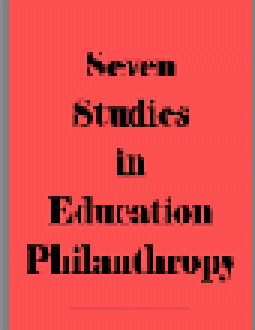Donna Walker James, Sonia Jurich and Steve Estes, American Youth Policy Forum, 2001
This report, the fourth in an American Youth Policy Forum (AYPF) series highlighting academic and social programs that "make a difference" for young people, provides background data on minority achievement and summarizes existing research on programs that have boosted African-American, Latino and Native American academic achievement. The report profiles 38 successful programs, ranging from the celebrated KIPP Academies of Houston and the Bronx to less well known efforts like Advancement Via Individual Determination (AVID), a challenging college preparatory program targeted at low-income teenagers. The report describes each program and recaps the results of studies undertaken by independent researchers using data collected by program administrators. Although no single strategy for success was common to all programs, frequently cited elements include some predictable and key items: meticulous planning and adherence to goals; leaders who lead by example; measuring progress based on pre-established benchmarks; academically demanding curricula; extensive professional development; and family involvement. AYPF concludes that 1) "commitment to all students, more than specific strategies, appears to prevail as the main contributing factor of success," and 2) progress in narrowing the achievement gap is frustratingly slow, due in part to the perpetuation of ineffective programs based on shoddy research and evaluation practices. View the report at http://www.aypf.org/rmaa/index.html or order a copy for $10 at http://www.aypf.org/pubs.htm or by sending a check to American Youth Policy Forum, 1836 Jefferson Place, NW, Washington DC 20036-2505.

